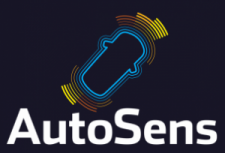Search Results for: MTF
Autofocus Speed
Imatest 4.4+ can evaluate auto-focus (AF) as a measure of MTF with respect to time. This can be performed by using the SFR module with an appropriate video file. Related pages Auto Exposure in Stepchart Autofocus Speed in SFR Auto White balance in Colorcheck Uses/Purpose This metric is intended to be used as a way to measure the time a camera system takes to auto-focus. Rise time and settling time are automatically calculated. This measurement does not provide information about the accuracy or precision of auto-focus. To evaluate those measures, several measurements should be performed on the final, settled images and compared. File […]
Arbitrary Charts Module Settings
Analyses & Output – INI settings – Chart Definition Files – Chart Definition Utility – Video Analysis INI file fields relevant to Arbitrary Charts The following INI fields are currently exposed to the user to control the behavior of the Arbitrary Charts module and its output. They have been organized here by topic, but do not need to be in any particular order or grouping in your INI file itself. [arbcharts] section Slanted-edge Analysis Texture Analysis Star Analysis Wedge Analysis Uniformity Grid Analysis Color/Tone/Noise Circle Detection Perceptual metrics Video Analysis […]
Arbitrary Charts
Analyses & Output – INI settings – Chart Definition Files – Chart Definition Utility – Video Analysis Combine all the features you need to analyze into a single chart Introduction The Imatest™ Arbitrary Charts module analyzes images of custom test charts. A chart-definition file (typically user defined) is needed to describe the chart layout to Imatest software. The Arbitrary Charts module will automatically locate and analyze target features when an observed image of a chart is loaded along with the corresponding definition file. This module allows users to get a number of measurements out of custom, legacy, or competitors’ charts which […]
Acutance and SQF (Subjective Quality Factor)
Introduction to Acutance and SQF Acutance and Subjective Quality Factor (SQF) are measures of perceived print or display sharpness. SQF was used for years in the photographic industry but has remained unfamiliar to most photographers. Acutance is a relatively new measurement from the IEEE Camera Phone Image Quality (CPIQ) group. Both are metrics which incorporate the effects of The imaging system: The Modulation Transfer Function (MTF) of the camera as a measurement of its intrinsic sharpness. The viewer: The human eye’s sensitivity to each spatial frequency modeled with a Contrast Sensitivity Function (CSF). The viewing conditions: The image display height […]
Documentation – Current v24.2
View Release Notes For beginners: We recommend these web pages for getting started: Introduction to the new Imatest Main Window (New in 2021.2) Image Quality Factors – Using Imatest – Getting started – Imatest Updates and Features VIDEOS – Online training – Consulting – News Index of the Table of Contents Offline documentation Download the website for offline view (with a web browser) Image Quality IQ factors (KPIs) measured by Imatest, with links to detailed descriptions and instructions. Sharpness Introductions to sharpness and sharpening; comparisons of different charts; chart quality limitations & how to overcome them Other IQ […]
AutoSens Europe 2024
Join us and other automotive imaging industry experts on October 8-10 in Barcelona, Spain. We will present our advanced testing methods and algorithms for validating the quality of automotive cameras. Passes are free for OEM & Tier 1 Automotive industry companies or register for early bird pricing by August 23rd. AutoSens Europe Website Book Pass Tutorial by Norman Koren Tuesday 8th October – 14:00 CEST – Room 6 Information Metrics for Performance and Optimization of Machine Vision Systems See also Image Information Metrics. Visit Imatest’s Booth #334 for Demonstrations Leader SFR-Fit MTF Measurement Software SFR-Fit is camera resolution measurement software that measures MTF (Modulation […]
Managing Supply Chain Image Quality with Imatest
Published January 30 2015, updated July 26 2024 By Henry Koren, with contributions by Norman Koren. Edited by Matthew Donato, Jackson Roland and Ty Cumby. Table of Contents 1. Introduction The quality of imaging systems in mobile devices plays an increasingly important role in consumer purchasing decisions. A mobile device that fails to deliver acceptable quality images can have an adverse effect on the consumer’s brand loyalty, whether or not the customer has returned it. Unless proper care is taken, raising camera quality standards can reduce manufacturing yield. This could damage a supplier’s profitability as well as endanger their ability […]
ISO 8600 — Medical Endoscopes
Standards: ISO 8600-1 2015: Part 1 — General requirements ISO 8600-2 2015: Part 2 — Particular requirements for rigid bronchoscopes ISO 8600-3 2019: Part 3 — Determination of field of view and direction of view of endoscopes with optics ISO 8600-4 2015: Part 4 — Determination of maximum width of insertion portion ISO 8600-5 2020: Part 5 — Determination of optical resolution of rigid endoscopes with optics ISO 8600-6 2020: Part 6 — Vocabulary ISO 8600-7 2012: Part 7 — Basic requirements for medical endoscopes of water-resistant type ISO 8600-8:2021: Endoscopes — Part 8: Particular requirements for capsule endoscopes Technical […]




